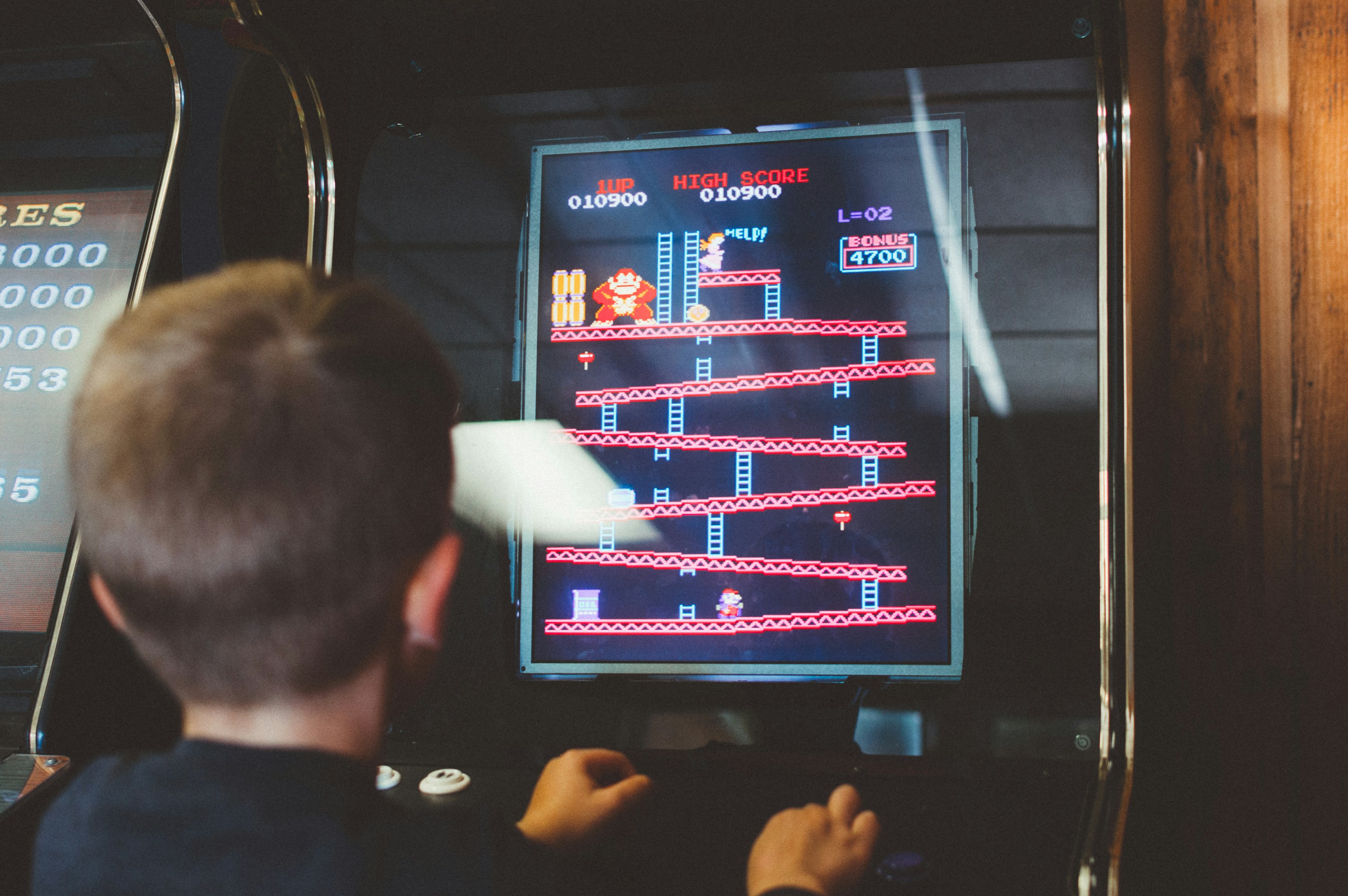News
Film and Gaming Revolutionizing the Events Industry
How Film and Gaming Are Revolutionizing the Events Industry
The world of entertainment is evolving faster than ever, driven through the industries by advances in technology, changing audience expectations, and the influence of sectors like film, TV, and gaming. Conferences and trade shows, once primarily about networking and product showcases, are increasingly borrowing techniques from cinema and interactive gaming to create more immersive, engaging, and memorable experiences. From virtual reality activations to cinematic storytelling and gamified attendee journeys, these industries are redefining how events are conceptualized, designed, and executed.
In this post, we’ll explore how film and gaming are revolutionizing the events industry, highlight emerging trends, and provide strategies for planners to harness these innovations for conferences and trade shows.
The Influence of Film on Event Design
Film has long been a medium for storytelling, visual spectacle, and emotional engagement. Today, event organizers are applying cinematic principles to create experiences that resonate with attendees on multiple sensory levels.
1. Storytelling as a Core Experience
Just as a film engages its audience through narrative arcs, characters, and plot, conferences and trade shows can benefit from a cohesive story. This goes beyond thematic decoration—it involves crafting a journey for attendees.
Applications in events:
- Opening sequences: Similar to a film trailer, an opening session can set the tone and build anticipation. Multimedia presentations, cinematic lighting, and dramatic sound design can create a strong first impression.
- Content flow: Organizing sessions, panels, and activations as part of a narrative arc helps maintain engagement. For example, a tech conference could structure its content as a “hero’s journey” where attendees learn, explore, and achieve a final outcome.
- Thematic environments: Event spaces can be designed like film sets, immersing attendees in different “scenes” or zones that reinforce the narrative.
Psychological impact: Storytelling increases retention, emotional connection, and recall, making key messages more impactful than traditional static presentations.
2. Cinematic Production Values
Film techniques—lighting, sound design, projection mapping, and visual effects—are increasingly employed to create wow moments.
Examples include:
- Dynamic stage designs with moving LED screens and projection mapping that respond to speaker content.
- Immersive video walls and surround sound that give keynotes a theatrical feel.
- Choreographed entrances and reveals for product launches that mimic blockbuster film moments.
By elevating the production quality, events become not just informational but also memorable experiences, similar to attending a high-budget movie.
Gaming Principles Driving Engagement
While film inspires immersion and narrative, gaming contributes interactivity, competition, and real-time engagement. Attendees are no longer passive participants—they become players in the event experience.
1. Gamification of Event Experiences
Gamification applies game mechanics to non-gaming contexts, and conferences and trade shows are prime candidates.
Examples of gamified elements:
- Points and rewards: Attendees earn points for visiting booths, attending sessions, or participating in challenges. Points can be redeemed for prizes or exclusive access.
- Leaderboards: Competitive elements encourage networking and participation, motivating attendees to engage more fully.
- Interactive scavenger hunts: Attendees explore the venue to find clues or complete tasks, increasing interaction with exhibitors and content.
Psychological impact: Gamification taps into intrinsic motivation, encouraging engagement through fun, achievement, and social recognition. It also increases retention of information and encourages exploration beyond comfort zones.
2. Immersive Technologies
Gaming technologies like AR, VR, and mixed reality are transforming how attendees interact with both content and each other.
Applications in conferences and trade shows:
- Virtual booths: Attendees can explore 3D exhibitor spaces from anywhere, with interactive product demos and live chat features.
- AR overlays: Smartphone or AR glasses allow attendees to access additional content or visualize products in real-world environments.
- VR simulations: Industries like automotive, real estate, or healthcare use VR to provide hands-on experiences that would be impossible in a physical booth.
These technologies increase engagement, extend reach, and create “shareable” moments that amplify the event’s impact.
Hybrid and Virtual Events: Merging Film and Gaming
The COVID-19 pandemic accelerated the adoption of virtual and hybrid events. In this context, film and gaming elements have become even more critical in keeping audiences engaged.
1. Cinematic Virtual Production
Virtual platforms can adopt cinematic storytelling principles to create a polished, professional feel. For example:
- High-quality pre-recorded content combined with live sessions enhances production value.
- Virtual sets designed with 3D graphics, projection mapping, and motion graphics create immersive digital environments.
- Narrative-driven programming guides attendees through the virtual space as if they are exploring a digital film world.
2. Interactive Gaming Mechanics Online
Virtual and hybrid events can leverage gaming mechanics to combat “Zoom fatigue” and encourage interaction:
- Virtual missions: Attendees complete tasks across sessions and booths to earn rewards.
- Avatar-based networking: Gamified avatars allow remote attendees to interact in shared digital spaces.
- Mini-games and challenges: Quick interactive games during breaks maintain engagement and energize participants.
By combining cinematic presentation with gaming interactivity, virtual events achieve higher engagement levels than traditional video calls or webinars.
Engagement Strategies Inspired by Film and Gaming
For event planners, the key is integrating these entertainment-inspired elements in a way that aligns with business objectives. Here are actionable strategies:
1. Design an Event Narrative
Map the attendee journey like a storyline:
- Exposition: Welcome attendees and provide context.
- Rising action: Engage participants through challenges, panels, or workshops.
- Climax: Deliver a memorable keynote or reveal.
- Resolution: Encourage reflection, networking, and next steps.
This approach helps attendees feel invested in the event and creates memorable moments.
2. Gamify the Experience
Incorporate points, achievements, and competitive elements into the event:
- Offer rewards for social engagement (posting on event apps, participating in Q&A, visiting sponsors).
- Use leaderboards to encourage friendly competition.
- Integrate real-time progress tracking to increase immersion and motivation.
3. Leverage AR and VR
Even in physical conferences, AR and VR can be used for immersive activations:
- Product demos and simulations in VR.
- AR-enhanced signage and interactive displays.
- Virtual tours for remote attendees integrated into the live event.
4. Invest in High-Quality Production
Visuals, lighting, sound, and stage design should be treated like cinematic production:
- Coordinate lighting and visuals with session themes.
- Use video walls, projection mapping, and surround sound to create immersive moments.
- Design set pieces that encourage exploration and social sharing.
5. Personalize the Experience
Use gamification and technology to tailor experiences for each attendee:
- Personalized agendas based on interests.
- Custom rewards or challenges for VIPs or loyal attendees.
- Data-driven matchmaking to connect attendees with complementary skills or interests.
Case Studies: Film and Gaming in Action
1. CES (Consumer Electronics Show)
CES has integrated cinematic presentations and gamified interactions for exhibitors. Interactive demos, VR experiences, and immersive product storytelling make the expo feel like a blend of a tech showcase and a film festival.
2. E3 (Electronic Entertainment Expo)
E3 is a natural convergence of gaming and events. Beyond traditional booth displays, E3 leverages interactive demos, immersive storytelling, and competitive gaming tournaments to engage attendees. Lessons from E3 are increasingly applied to corporate trade shows and conferences.
3. Microsoft Ignite
Microsoft combines cinematic keynotes with gamified attendee experiences, such as achievement tracking and interactive sessions, blending film-inspired presentation with gaming-style interactivity.
Future Trends
The influence of film and gaming on events is only accelerating. Here are some trends to watch:
- Extended Reality (XR) Experiences: More conferences will adopt mixed reality to combine physical and virtual experiences.
- Narrative-Driven Engagement: Storytelling will become central to event design, not just a supplement.
- AI-Powered Personalization: Machine learning will optimize attendee journeys, content recommendations, and matchmaking in real time.
- Esports and Competitive Engagement: Trade shows will incorporate competitive gaming elements to attract younger, tech-savvy audiences.
- Social Sharing and “Instagrammable” Moments: Visual storytelling and interactive installations will be designed for shareable experiences that amplify brand reach.
Conclusion
Film and gaming are no longer just entertainment—these industries are increasingly becoming influential in the constant evolution of the events industry. By leveraging storytelling, cinematic production, gamification, and immersive technologies, conferences and trade shows can offer experiences that captivate, engage, and retain attendees like never before.
For event planners, the key is to think beyond traditional formats: treat sessions like scenes in a story, incorporate interactivity like a game, and create spaces that inspire exploration and connection. Attendees don’t just want information—they want an experience. Those who successfully integrate film and gaming principles will redefine what it means to attend a conference or trade show in the modern era.
The events industry is evolving into an interactive, immersive, and narrative-driven ecosystem—and those who embrace these trends will lead the next generation of conferences.












